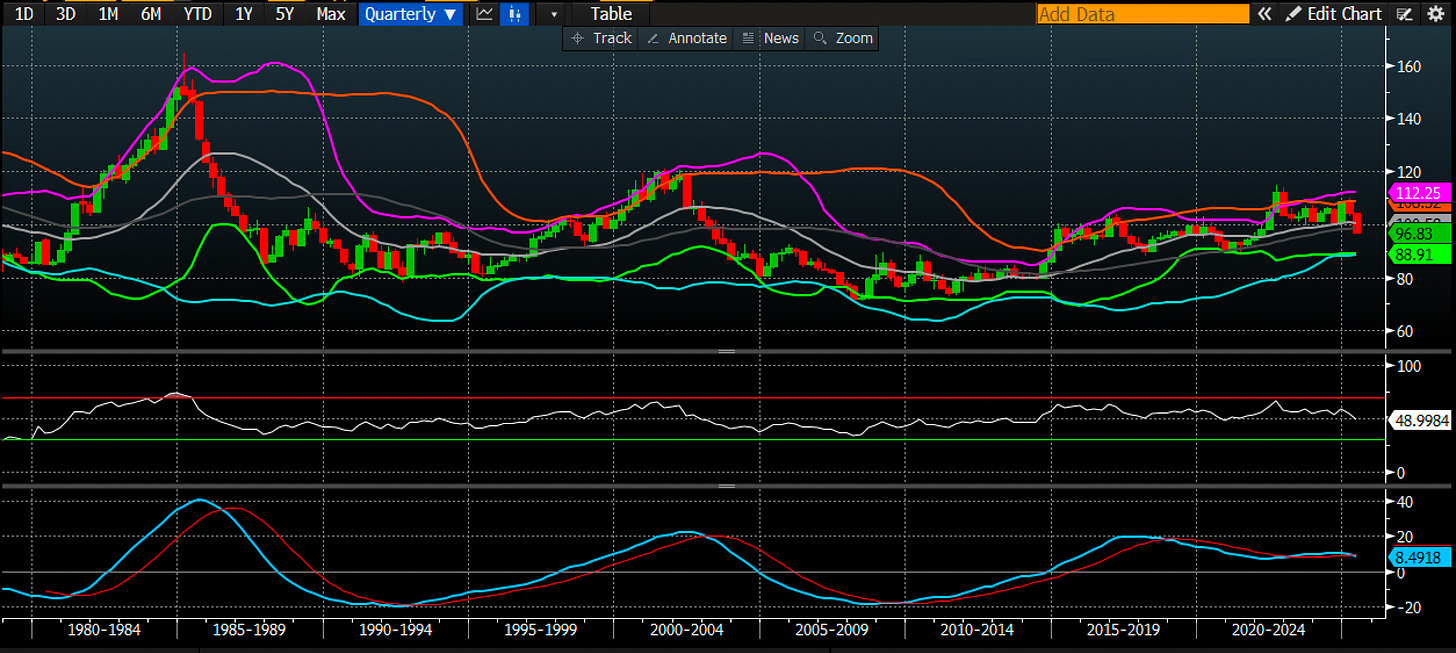Attack the Week (ATW)
Ready for the Second Half
Monday Thoughts
I was enjoying a great weekend, attending a birthday party of an old friend and former flatmate of mine. I haven’t seen him for nearly a decade, but we always stayed in touch. It’s amazing how you instantly connect and remember fun old stories. Hell of a good time, although my head still hurts a little today.
I struck up a conversation with a few other people attending the party; one of them worked for a large European pension fund, and we naturally connected over the current state of the macro world. Turns out, however, that their overall allocation hasn’t changed a dime this year so far. He explained that those allocation reviews would normally occur quarterly, and that the first quarter was still uncertain as to the impact. Closing in the second quarter and the first half, however, will allow for a more detailed analysis of the situation, and he expects management to choose to adjust the allocation to some degree. Having worked with institutional clients, one thing is sure: there is hardly ever an urgent need, and any change is usually very minor. Still, if the industry as a whole decides to move the needle by just a few degrees, significant capital flows can occur. Then, over the weekend, I came across a new post by the ECB.
“There is now an urgent need to channel retail savings into European capital markets in order to develop those markets and finance EU priorities. In this edition of the ECB Blog, we show that an EU savings standard could increase retail participation in the capital markets, benefiting savers, boosting investment in EU companies and supporting strategic priorities.” [1]
This immediately reminded me of Russel Napier’s concept around “nationalist capitalism”, a move for governments to channel domestic savings solely into their own capital markets. With passivisation through benchmarking, it won’t take a genius to realise that a substantial amount of money is still heavily invested in US assets. The core pillar of my macro roadmap ahead is the continued weakening of the USD trend, which I believe is still underappreciated, despite our significant progress already. What if we are just in the early stages of the move?
Examining my preferred long-horizon chart framework (DXY above), it appears that we still have around 8% to fall to reach longer-term support.
It’s been a fantastic first half at Paper Alfa. The short Dollar macro play was laid out in late March, and we have benefited tremendously. The asset allocation model has gained momentum again and accurately captured the recent rally in bonds and stocks (more on the results and forward-looking allocation further below). Meanwhile, the momentum and reversal models have provided us with numerous tactical setups, with the recently launched intra-day model offering the same on very short-term time frames. In addition, Macro D has provided us with his favoured FX expressions, which so far have been returning handsomely. As they say, never change a winning formula. We will continue providing our thoughts and implications on all fronts, as the world of macro will undoubtedly have some twists and turns for us in the coming months. We are ready and locked in for the second half.
Interested in joining the pack? Why not give it a go over the summer months with a 7-day trial?
Let’s now read some additional thoughts from Macro D on the likely return of tariff talk, before we scan the weekly macro calendar, check a few interesting chart setups and update the weekly asset allocation model for its latest change and performance.
Wishing you all a successful week ahead!




